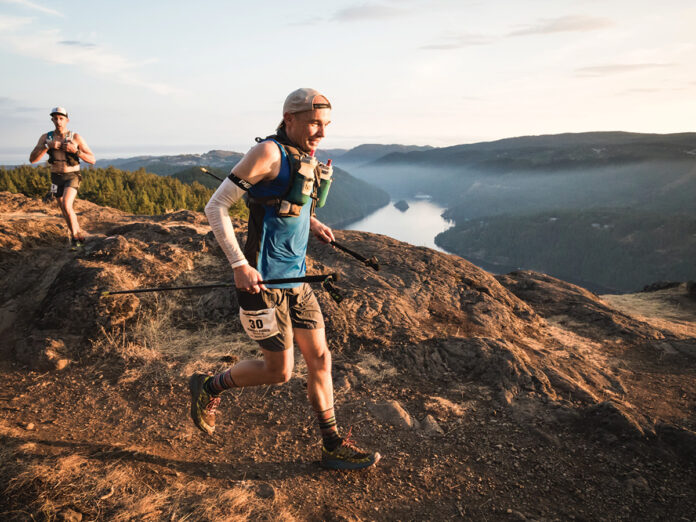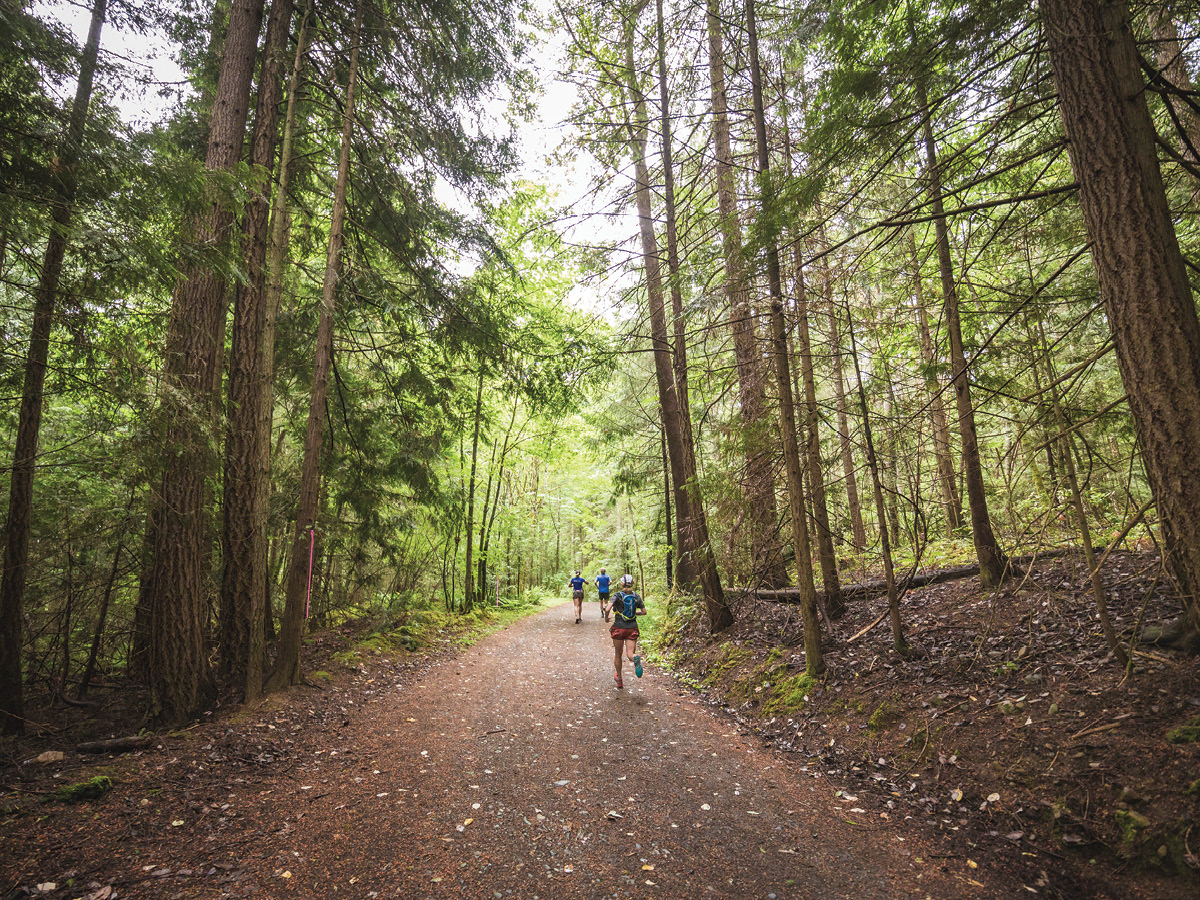
For many runners there’s nothing better than running through the woods, over roots and rocks while enjoying being in nature. Trail running offers benefits you won’t get from road running.
The uneven surface requires you to use your core and strengthens muscles, tendons and ligaments. Dr. Jack Taunton, chief medical officer of the 2010 Olympics and former elite runner says, “Trail running is an excellent way for distance runners to add to tempo and speed running in order to reduce overuse injuries.”
Given all these benefits, here are a few tips to make your next trail run safe, enjoyable and fun!

Photo: Matt Cecill
1. Choose the Right Trail
Before hitting the trail, check out the type of terrain that’s involved to be sure it’s suitable for your fitness level. Trails can range from bark-covered level running surfaces in a city park, to a rock-strewn, mountain descent in the backcountry.
“Don’t get in over your head,” says Phillip Gary Smith, an avid trail runner and author of 300-Mile Man. “A trail may seem like fun on paper, and the distance obtainable, but the terrain may be tougher than you ever imagined. You might find yourself worn out after reaching the turn-around on an out-and-back course or the halfway point.”
2. Get Proper Shoes
Invest in trail shoes because the terrain can be rugged. Trail shoes are sturdier and stiffer than regular running shoes and offer protection from uneven surfaces like rocks and roots. They are designed to prevent your foot from twisting and the soles feature lugs that help provide solid footing.
3. Dress For Success
The key is to dress in layers as the weather can change on the trails. Many trail runners carry a small backpack with extra clothing, snacks, a first aid kit and water. These come in handy on longer runs or if the weather turns.
4. Watch Where You’re Going
“Be careful not to trip over roots as they are a common cause of ankle sprains,” Taunton says. “And be aware that when running uphill, the force through the knees equals your body weight. But on the downhills, the force through the knee is three to four times your body weight, stressing the cartilage significantly more. Try to select trails that allow you to go down in stages instead of one long blast downhill.”
5. Don’t Panic If Things Go Wrong
“Even with plenty of planning, things can go wrong,” says Smith. “Sometimes you have to suck it up and go through a bit – or a lot for that matter – of misery to reach safety or a destination. Thinking and planning about what might go wrong and learning to deal with the unknowns will serve you well on your trail adventures.”
6. Be Safe
If you’re running alone, be sure to tell someone where you’re going as well as being certain of the trail geography so you don’t get lost. Consider bringing a cell phone and ensure you have enough water to go the distance. Be aware of your surroundings and don’t wear headphones.
7. Respect The Trail
While you’re out on a distant trail, be sure to respect the natural environment by following trail signage, being considerate of other trail users such as hikers or mountain bikers, packing out what you pack in, not feeding the wildlife and staying on designated trails. In addition, leave flowers, rocks and sticks on the trail, don’t take them home to decorate your yard!
These few tips should get you on the way to some great trail runs!















